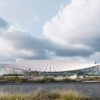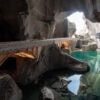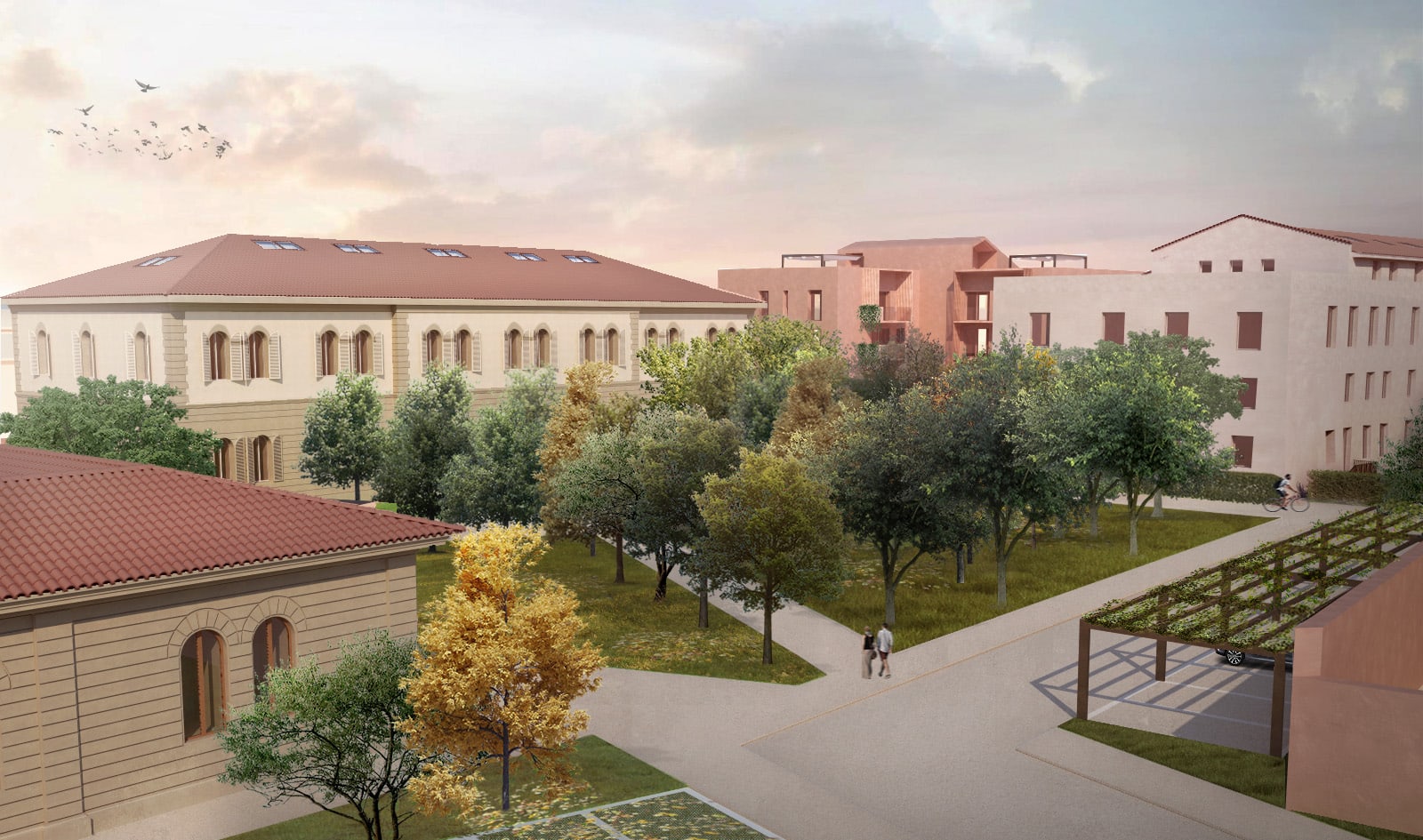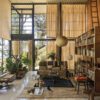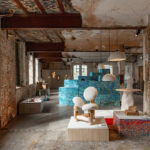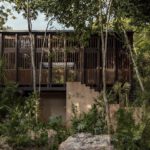Transformation, accessibility and renovation: Pierattelli Architetture studio interprets the urban regeneration concept by designing new residential units, with green spaces open to the city, on an area disused since 1995-
Cities transform and become theatres of change. The urban regeneration of disused areas, inspired by sustainability principles and the development of communal spaces, is part of the postindustrial city where there are continuous economic, technological, social and political changes. Pierattelli Architetture – a studio founded in Florence in 1980, with offices in Milan – interprets this change by handling the project for the recovery and development of the former Curtatone e Montanara military barracks, in the historic centre of Pisa. By juxtaposing the recovery of unused spaces with the creation of new residential areas, the work provides social housing and a public park of more than 2,000 square metres open to the city.
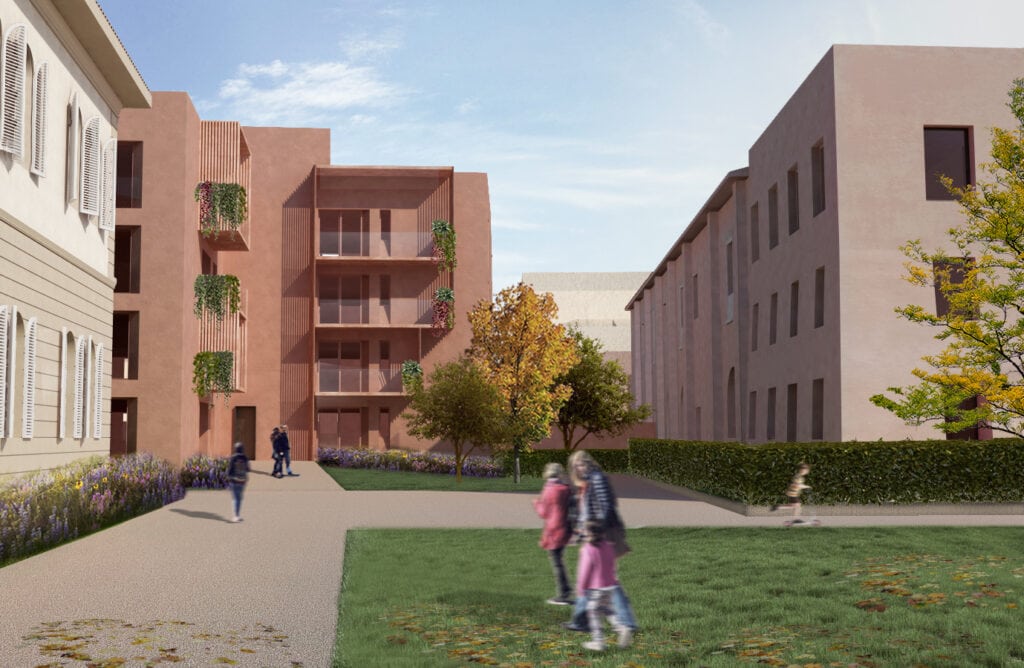
This area was the Distretto di Leva headquarters until 1995 and then disused. The former military area is located south of Lungarno, in the San Martino district. In the changing city, the barracks – built mainly during the unification of the Italian state and before the Second World War – are considered starting points for the regeneration of the disused military heritage, which occupies central and symbolic spaces, close to railway yards and major road junctions. Accessibility, inclusiveness and quality: this part of Pisa will become a new landmark, acting as a driver for a new way of social and collaborative living, opened to the city and stimulating new regeneration processes for the San Martino district. The purchaser of the former Curtatone and Montanara military district, Investire SGR in Rome, is specialised in developing real estate portfolios and a leader in Italian real estate. It entrusted the area’s recovery project to Pierattelli Architetture, through the Toscano Housing Fund. Accessible from Piazza San Martino and Via Giordano Bruno, 600 metres from Pisa’s central railway station and 2.6 km from Galileo Galilei airport, the former barracks underwent environmental reclamation.
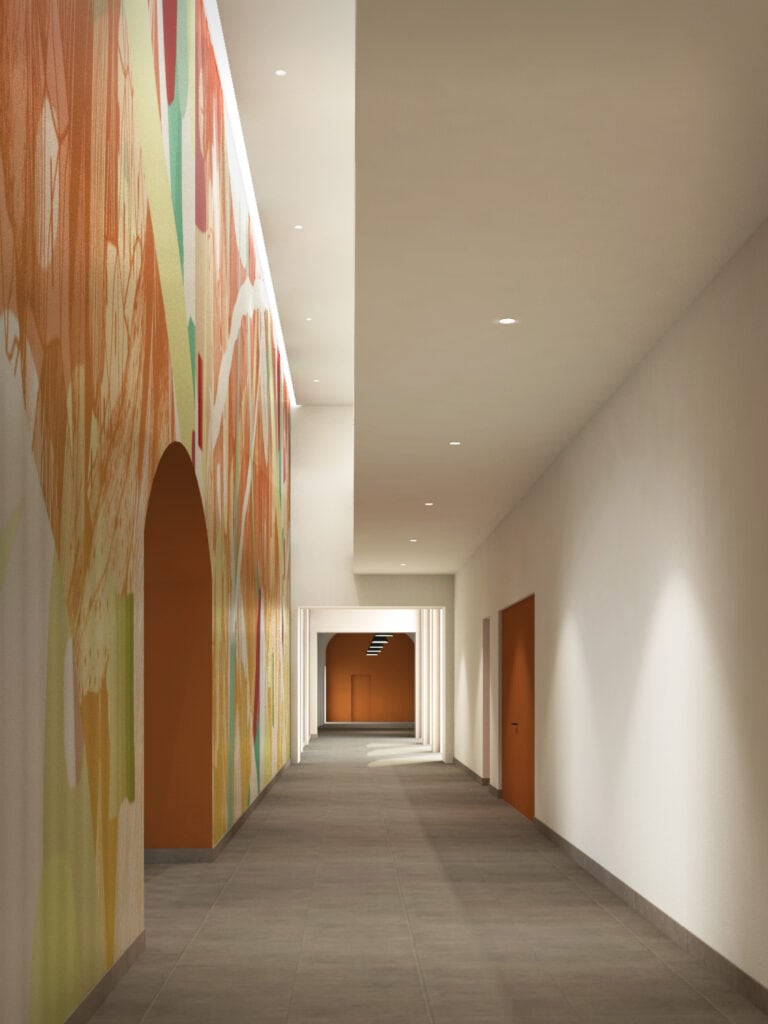
The area consists of four main buildings, of which only one has been built from scratch. The buildings date back to different historical periods. The one in front of the Church of San Martino, is a former medieval monastery remodelled and enlarged in the 19th century, the more recent buildings were built in the late 19th and early 20th century. Limited by the Superintendency of Cultural Heritage, the Pierattelli Architetture project focuses on the recovery and integration of the complex, which becomes exclusively residential, with homes for social housing, assigned to families based on their income, and for the Voluntary Sector. This occupies an area of more than 8,000 square metres for 72 flats of different sizes and three shops.
The architects redesigned the interior spaces to obtain additional floors. The buildings that make up the complex have been completely modified and restructured in their elevations and internal staircases, and dialogue through their shapes and colours in a palette of warm, delicate tones that pick up on the nuances of raw earth and the land, using Tuscan terracotta as a sunshade on the terraces of the newly constructed building. This building was developed on four levels. It has a room for condominium use on the ground floor and 19 residential units divided into five different sizes, some of which have large spaces. The large terraces where greenery was added, became the project’s typifying element, a further incentive to the dwellers’ well-being and life quality.
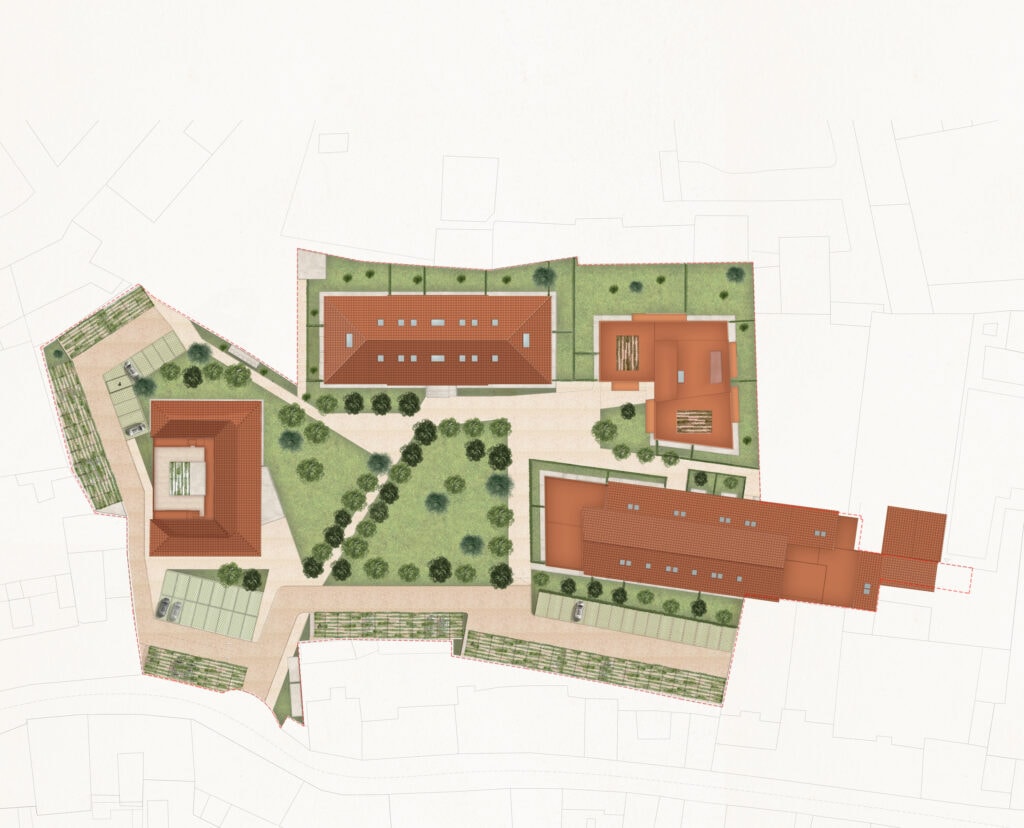
Pierattelli Architetture’s work is particularly incisive in transforming the area into a new meeting point and the centre into a public park full of vegetation and pedestrian and vehicular paths connecting the district’s streets. The project is not just about the redevelopment and recovery of an area abandoned for 30 years but a new connection space for the district through different streets, and using almost exclusively pedestrian paths that did not exist. Pierattelli Architetture founder Massimo Pierattelli said: ”The project to transform the former Curtatone Montanara barracks area is a rare case of recovery within a historic and ancient city like Pisa, which is undergoing a great transformation including the new Stadium, Santa Chiara Hospital and Galilei Airport. Our project is part of this evolution in a complicated environment like the historic centre, which has objective accessibility and management limitations. By creating new housing and a new communal space, our work is not just about the redevelopment of an abandoned area, but an opportunity for citizens to experience more of the historic centre, due to green spaces, a square and play area that will be one of the largest public areas in the southern part of the city. In addition, the new social housing will create a new mixed community in the San Martino district which can drive the development of activities within the former Barracks area, the neighbourhood and the historic centre of Pisa.”
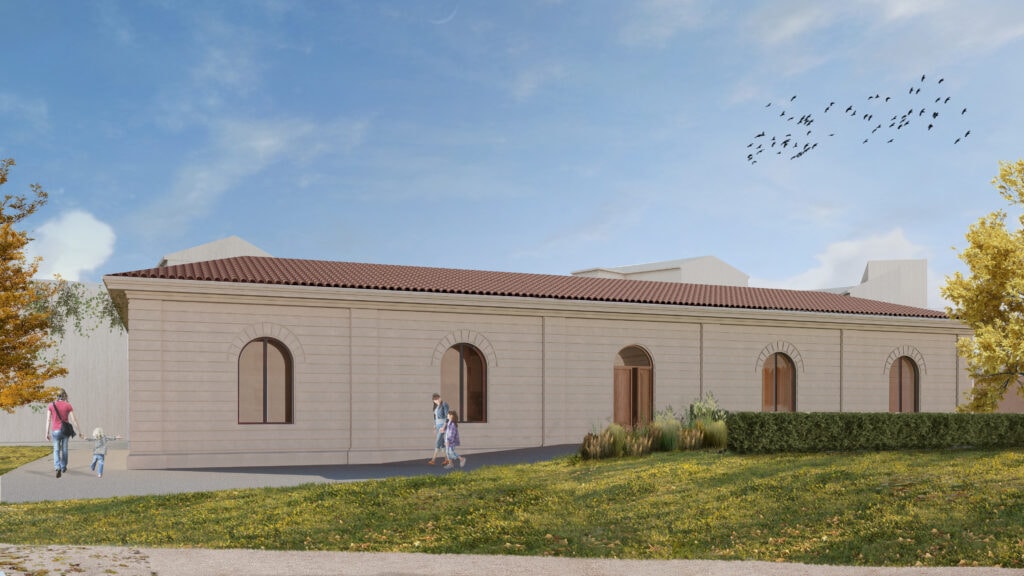
Pierattelli Architetture
Architecture, interiors, industrial design: Pierattelli Architetture’s multidisciplinary approach is reflected in customized projects that combine functionality, aesthetics, flexibility and innovation. Founded in Florence in the ‘80s by architect Massimo Pierattelli, the studio today employs a team of some 20 professionals, including his sons Andrea and Claudio. All the pieces of architecture are custom built, modelled not only around the client, but also around the context in which they are set. With its strong corporate vocation, Pierattelli Architetture began by specialising in the design of corporate offices and banks but over the years the firm’s activity expanded into the hospitality, residential and product design sectors. Among the studio’s main projects: the Arval offices at Scandicci, the Learning Center, Auditorium and Turbine Building for GE Oil & Gas in Florence, the Kortimed business center in Valencia, UnipolSai Villa Cicogna and Learning Center in Bologna, the luxury apartment hotels Domux Home, Number 9, M7 Contemporary Apartments and YellowSquare hostel in Florence, the Villa Solaia residence in Siena, the Cariprato headquarter in Prato.
Photocredits: Pierattelli Architetture

